This is the last of four posts about the most important skills for a language learner: reading, listening, writing, and speaking. Each week, we’ll focus on a different skill to understand how it works, the best way to learn it, and how you can practice it! This week our focus is on speaking.

Speaking is what many learners consider the home run of their language learning goals. Expressing yourself in a new language feels great! But because our identities are so tied to language, it can be nerve-wracking to step up to the plate and take a swing at speaking. But don’t let that stop your training—even rookies just starting out can benefit a ton from practicing speaking. You’ll surprise yourself by how strong you get when you practice!
Unlike reading and writing, which usually give you a bit more time to think, speaking happens fast. And there’s usually so much going on that you’ll want more than a memorized verb chart! Learning to speak a language also means knowing when and how to take turns (and interrupt), what words tend to be used together, and what gestures mean in the language you’re learning.
In this post we dive into how we teach speaking at Duolingo, what the science says about how speaking works, and the best ways for learners to practice it.
Duolingo’s all-star lineup
Duolingo lessons start with just a little bit of speaking until you’ve strengthened your receptive skills of reading and listening, and as you progress along your path, you’ll get more and more speaking exercises.
- Do you know the easiest way to start speaking? Repeat, repeat, repeat! With every sentence you hear or read on the app, make it a habit to speak it out loud. It’s a great way to get your brain and tongue warmed up so you can soon be speaking your own ideas.
- Whenever you can, keep that mic turned on! Duolingo’s speaking exercises allow you to practice pronunciation and putting words into phrases. In your Duolingo lessons, remember to turn on "Speaking exercises," from the settings under your profile.
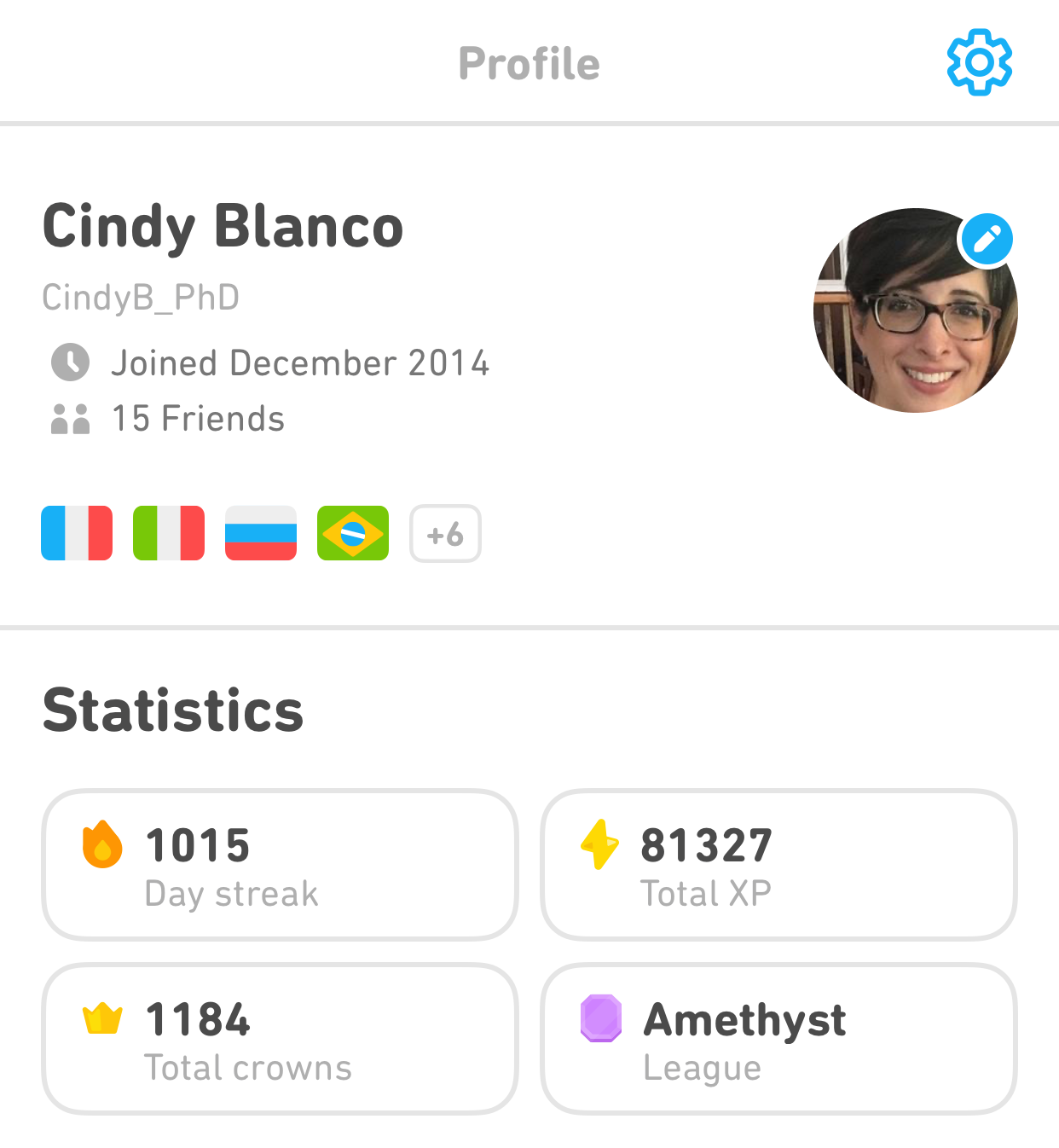 |
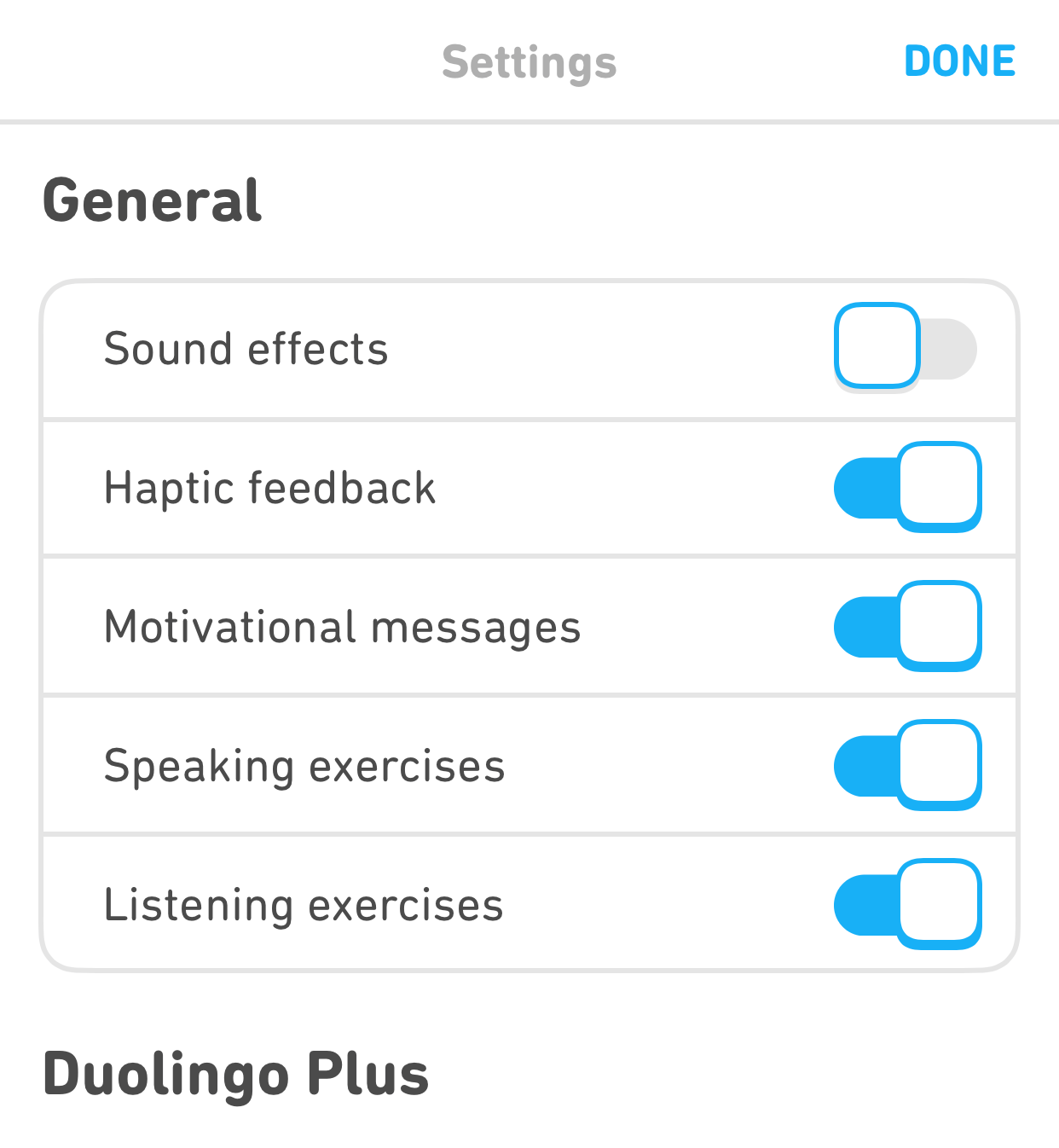 |
- Speaking exercises use AI voice recognition (neat!) to grade how close your pronunciation is to the goal, so you get real-time feedback about how you’re doing! Each words then turns blue when your pronunciation is successfully recognized.
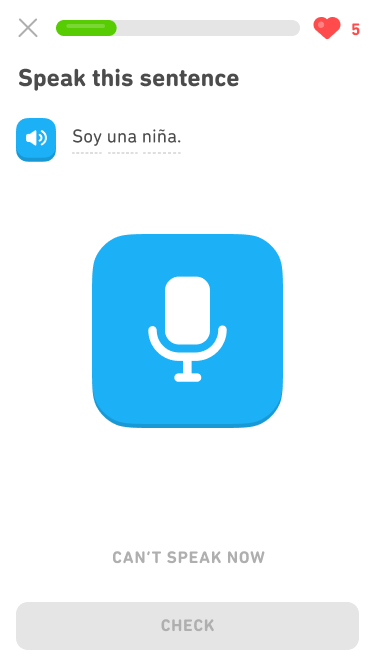 |
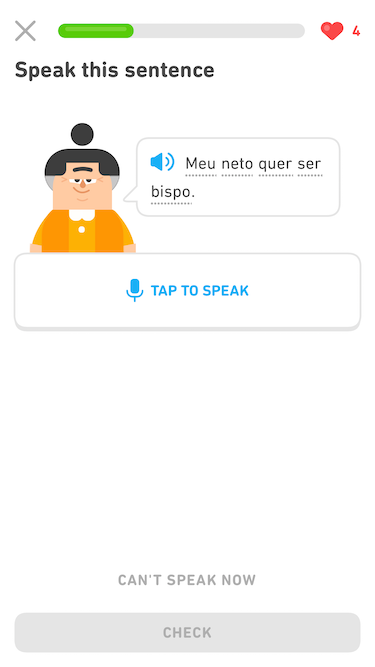 |
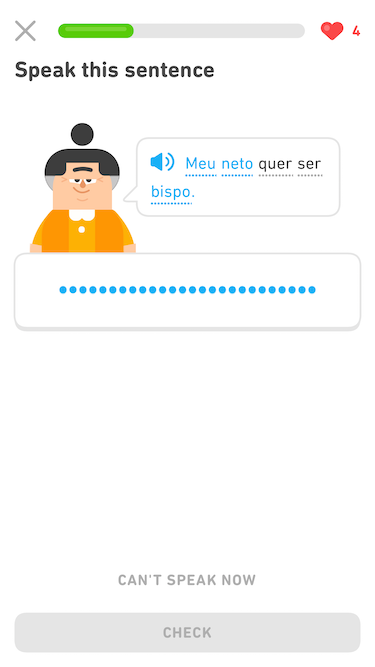 |
- In some of our larger courses like French and Spanish, you’ll see “conversation lessons,” which help you build speaking skills for some of the most common interactions you’ll have in your new language.
Let’s talk strategy: How does speaking work?
Unlike reading and listening, speaking is a productive skill, because you are producing the language. Speaking can make you feel like the center of attention, but it’s your chance to express yourself and connect with others, in a new language! We’ve seen in previous posts that all your language skills are interconnected, and speaking is especially intertwined with listening. So the more you practice listening to the language, the more you’ll see improvement in your pronunciation and speaking! And even the smallest amount of speaking practice is a huge win for your speaking skills.
There are lots of factors that go into speaking, and three of the most important are pronunciation, building sentences, and rules of conversation (or pragmatics). You can think of these as different points on the continuum of speaking skills: pronunciation is about the tiny details of how exactly to form each sound and each word in your mouth, building sentences involves putting words together on your own, and pragmatics covers how, when, and why to use language for specific purposes. In order to express yourself successfully, all three are important!
- You should never feel like your pronunciation has to be "perfect" to be understood, so think of pronunciation as serving your goal of communicating your ideas to your listeners. To help retrain your tongue, give yourself lots of listening practice, find ways to watch speakers pronounce the language in virtual events (like Duolingo Classes) or recorded videos, and practice speaking to yourself!
- Building sentences for speaking relies on a lot of the same memory retrieval skills we discussed in the writing post (read more there!). For most kinds of speaking—to new friends, classmates, on Zoom—you’ll want to jump straight from your ideas right into the language you’re learning. You can get faster and more confident building these sentences even just chatting to yourself. We’re all at home these days anyway, right?
- Pragmatics is important for knowing the socially appropriate way to communicate in the language. Very often, knowing words isn’t enough—you need to which ones are best for a situation. In English, the most appropriate way to order a coffee probably isn’t by marching into your neighborhood cafe and declaring "I want coffee." Sure, it’s grammatical, and yes, you’d be understood, but in English, to show respect and friendliness, it’s more common to use the phrase "I’d like to order a coffee, please." All languages and cultures have rules like this for casual conversations in the hallway, respectfully disagreeing with a friend, proposing a new idea—anything you’d want to do with language! We learn pragmatics through interactions, so your language study should include observing interactions in the language (this could be through reading or listening) and then doing some interacting yourself!
There’s lots of interesting things you’ll learn about culture as you learn to speak. For example, many languages differ in terms of their policies around taking turns in a conversation. In some languages, interruption is considered an important way to participate, while in others, it’s the height of rudeness! On the pronunciation side, languages can vary so much in terms of what combinations of sounds they allow—from Hawaiian, which requires that a vowel has to be followed by a consonant and a consonant has to be followed by a vowel, to Georgian, which allows up to six consonants in a row. Phew!

Learning off the field
To really knock it out of the park, find ways to incorporate speaking practice in your everyday routine.
- Keep up your listening skills! Since speaking and listening go hand-in-hand, make sure you’re listening to all kinds of speech in the language. This will help you develop instincts for what to say and how to say it.
- Take advantage of time alone or at home to do a little talking to yourself. Narrate what you’re doing, think out loud about plans, or challenge yourself to describe favorite traditions or childhood memories! Just like with writing, a big component in speaking is retrieving words from memory, and you can do this kind of practice on your own from anywhere.
- When you watch movies or videos on your own, repeat what you hear to give your tongue and brain some practice with the new sounds. Write down or record especially funny lines or catch phrases to incorporate into your around-the-house speaking practice. You’ll be developing your own repertoire!
- There will be some sounds in the language that will feel especially tricky to get right. If you’re having trouble with a sound or particular set of sounds, odds are others are too—search online for guides and videos for extra visual information to help pronunciation.
For rookie learners, find a fellow learning buddy to speak with! Many learners assume they won’t receive “good” practice from a fellow rookie, but in reality, feeling comfortable enough to speak with another learner can be a huge confidence booster that will encourage you to keep improving your speaking skills. A big part of speaking is getting used to putting words together to express your ideas, and you can definitely do that with a peer!
For more veteran learners, try to find a way to authentically speak the language in your community—online or off. Volunteering or finding an online community (like Duolingo Classes) can be great ways to engage in the language you’re learning. Another option is to find a partner for a bilingual language trade—you each take a few minutes to speak one language, then switch to the other. You can also speak creatively in your new language in the same ways you do in your own language. If you’re a poet, actor, or musician, try performing your art in the language you’re studying!

Taking your learning to the big leagues
Successful communication always relies on combining your language skills! In this series, we’ve shown you a little bit of how to build up your skills in the language, and how you can make the most out of language learning with Duolingo. As you practice mixing reading, listening, writing, and speaking, check back here often to see what new ideas you can fit into your training routine. And as always, happy learning!



